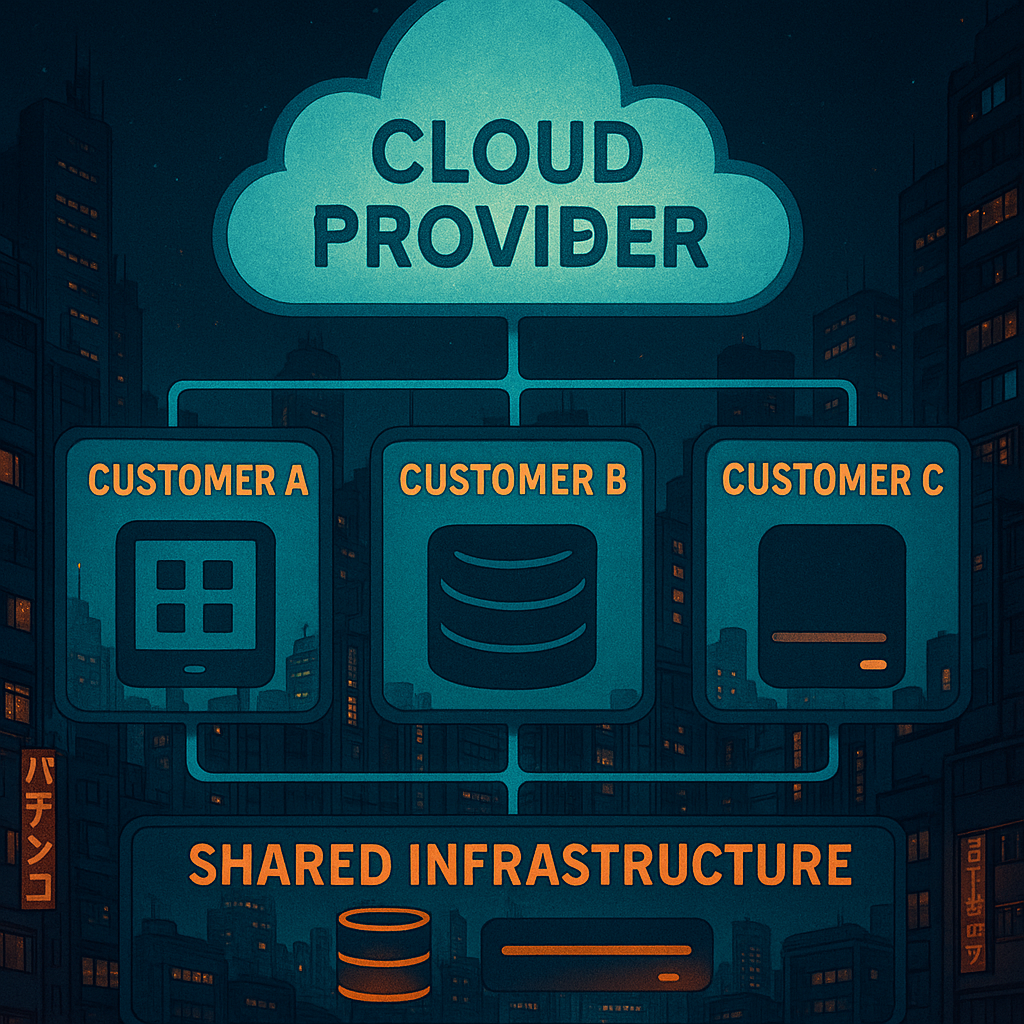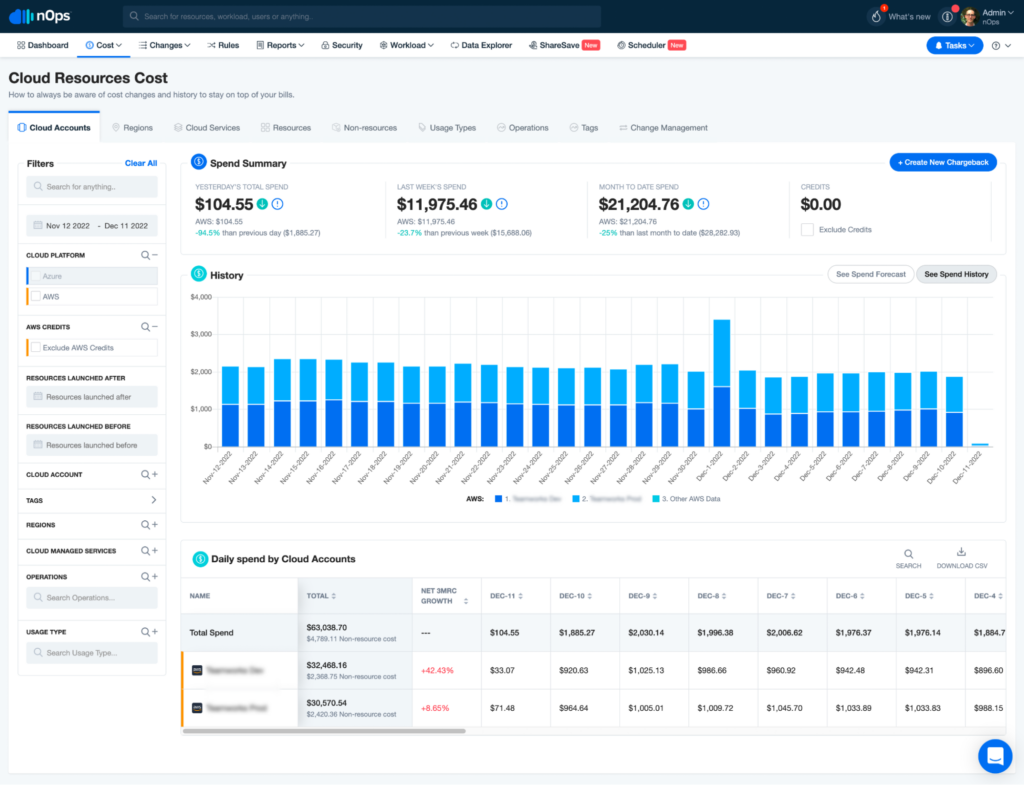Single-Tenant Vs. Multi-Tenant Cloud: Which One To Choose?
When it comes to cloud computing architecture, there are two main types: single-tenant and multi-tenant solutions. Single-tenant cloud provides dedicated resources for one client, while multi-tenant cloud shares resources among multiple clients.
Both approaches have their own advantages and disadvantages. Let’s discuss the differences between single-tenant and multi-tenant cloud solutions and provide guidance on which type of cloud is best for your business.
What Is Single-Tenant Cloud?
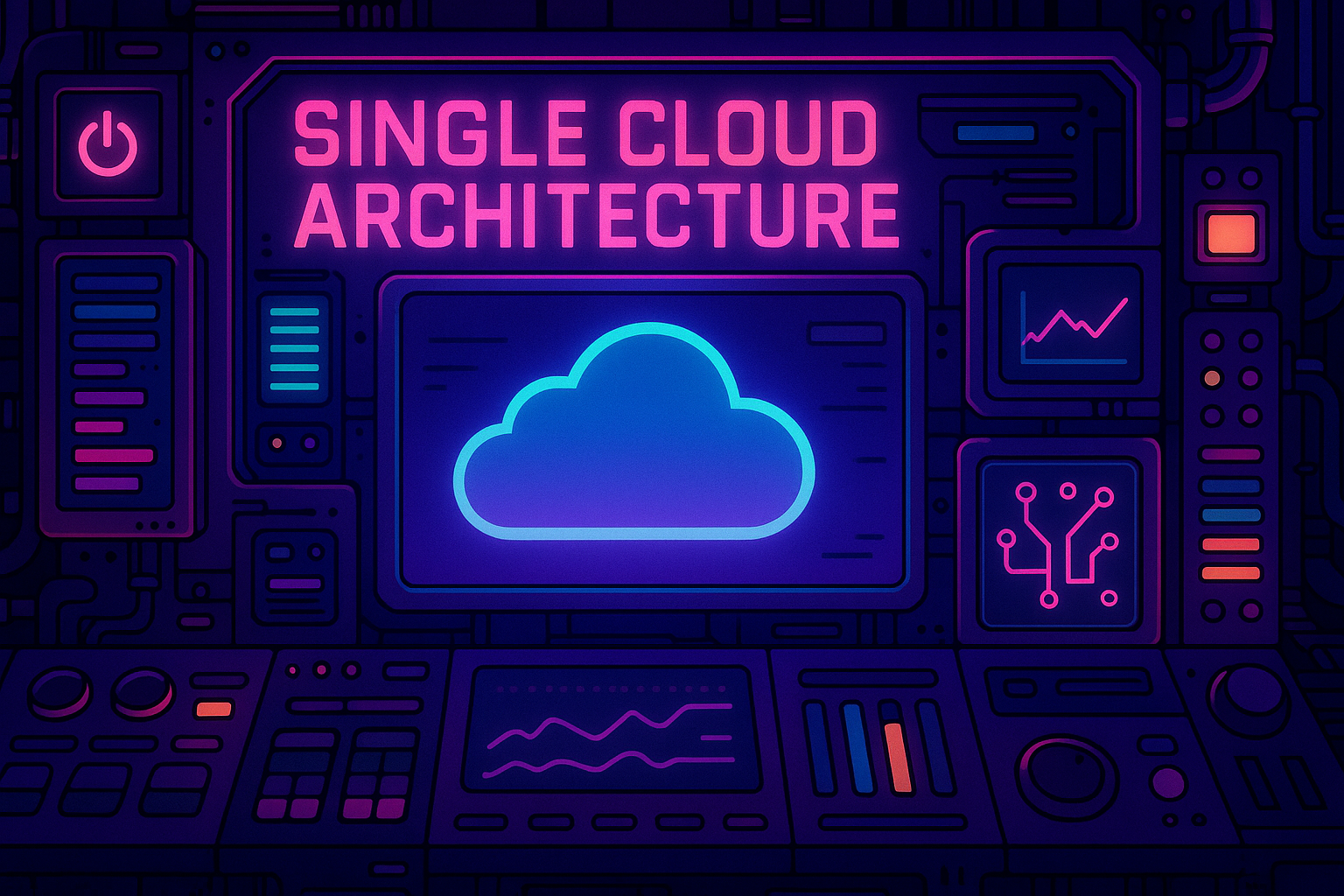 A single-tenant cloud is a cloud computing solution that provides dedicated resources to a single customer. This means the customer has exclusive access to the resources, including servers, storage, and applications. Single-tenant solutions are typically more secure than multi-tenant solutions since each customer is isolated from the other customers. This makes it more difficult for malicious actors to access a customer’s data or applications. Additionally, single-tenant solutions offer greater flexibility and control over the resources since the customer is the only one accessing them.
A single-tenant cloud is a cloud computing solution that provides dedicated resources to a single customer. This means the customer has exclusive access to the resources, including servers, storage, and applications. Single-tenant solutions are typically more secure than multi-tenant solutions since each customer is isolated from the other customers. This makes it more difficult for malicious actors to access a customer’s data or applications. Additionally, single-tenant solutions offer greater flexibility and control over the resources since the customer is the only one accessing them.
What Is Multi-Tenant Cloud?
In contrast to single-tenant solutions, multi-tenant solutions provide shared resources to multiple customers. This means multiple customers use the same resources, including servers, storage, and applications. While this approach can lead to cost savings, it also means that there is less security and privacy. Since multiple customers are using the same resources, it is easier for malicious actors to gain access to a customer’s data or applications. Additionally, since multiple customers are accessing the same resources, there is less flexibility and control over the resources and applications.
Multi-Tenant vs. Single-Tenant Cloud Architecture
Both multi-tenant cloud and single-tenant cloud are advantageous in their own way. Here’s how each benefits the user differently:
Benefits Of Single-Tenant Cloud
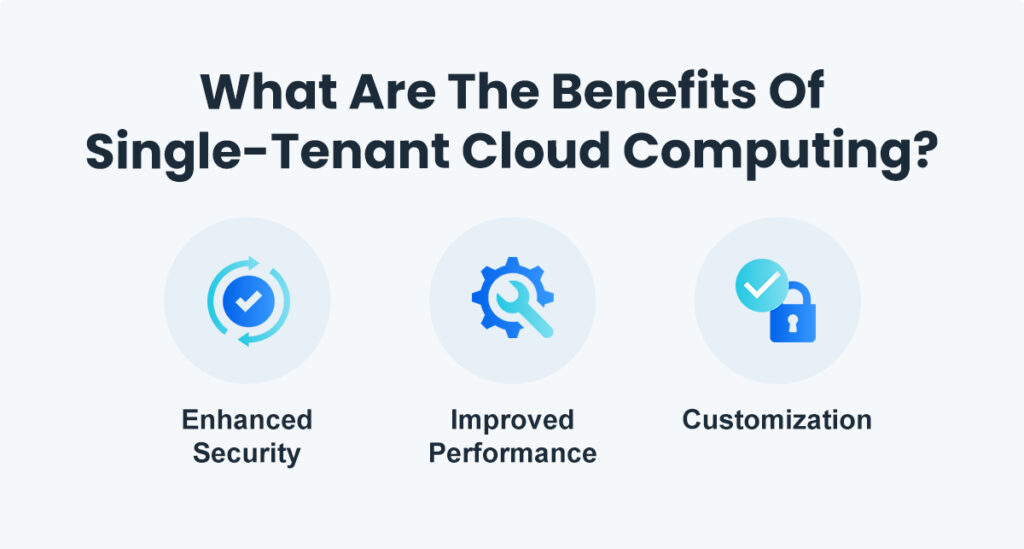
-
- Enhanced Security: Single-tenant cloud computing provides enhanced security because the customer’s data and applications are completely separate from other tenants. This helps to reduce the risk of unauthorized access to sensitive data.
-
- Improved Performance: Since the tenant is the only user of the server instance, there is no need to share resources with other tenants. This means that the tenant can expect improved performance since they have sole access to the full range of computing resources.
-
- Customization: With single-tenant cloud computing, the customer has full control over the server instance. This allows them to customize the system to meet their specific needs and requirements, making it easier to scale and grow.
-
Compliance: Industries with stringent data residency or control requirements (e.g., healthcare, finance) benefit from the full control single tenancy provides. It enables easier audits and policy enforcement
Benefits Of Multi-Tenant Cloud
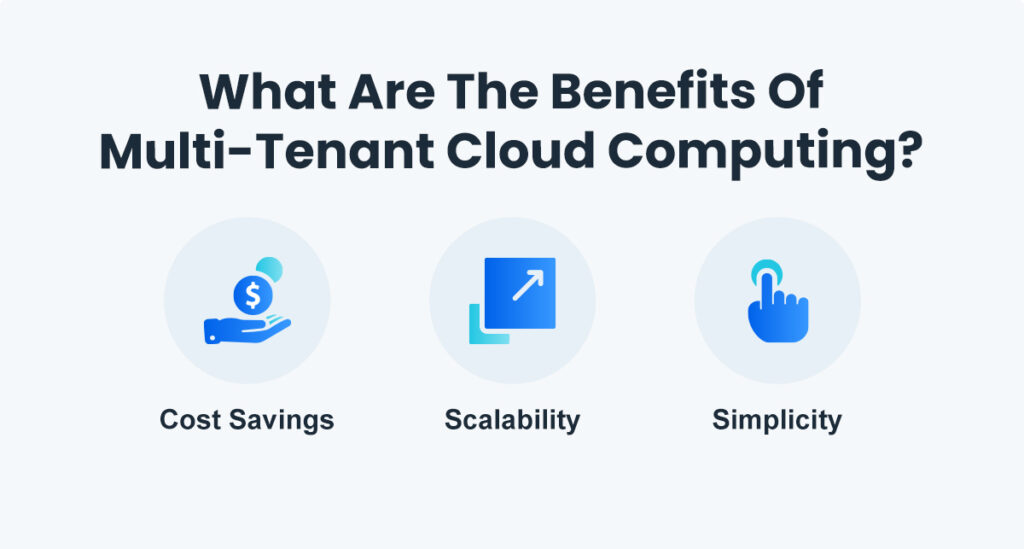
-
- Cost Savings: Multi-tenant cloud computing typically requires a lower upfront cost than single-tenant cloud computing because you don’t have to invest in dedicated physical infrastructure. In addition, multi-tenant architectures share infrastructure across customers, lowering operational and infrastructure costs per tenant. Providers can pass those savings on, making it more affordable than single-tenant setups.
-
- Scalability: Resources can be pooled and dynamically allocated across tenants, enabling efficient scaling. It’s easier to handle spikes in usage without provisioning for peak demand per customer.
-
- Simplicity: With shared infrastructure and a unified codebase, updates, monitoring, and management are centralized. This reduces overhead and simplifies operational complexity for both providers and customers.
- Faster Onboarding: New tenants can be provisioned quickly without setting up dedicated environments. This accelerates customer adoption and reduces setup time.
Single-Tenant vs. Multi-Tenant Cloud Architecture
Let’s summarize the differences in a quick table.
| Dimension | Single-Tenant | Multi-Tenant |
|---|---|---|
| Cost | Higher (dedicated resources, more setup and maintenance per client) | Lower (shared resources, economies of scale) |
| Security | Stronger isolation, better for sensitive data | Good, but risk of data leakage if not well managed |
| Performance | Consistent, not affected by other tenants | Can be impacted by other tenants’ usage |
| Flexibility | Highly customizable, full control for each client | Less customizable, standardized for all users |
| Scalability | Slower, requires duplicating resources for each client | Highly scalable, easy to add users/resources |
| Maintenance | Complex, per-client updates and fixes | Centralized, easier and automated updates |
Single-Tenant vs. Multi-Tenant Cloud: Which One To Choose?
Choosing between single-tenant and multi-tenant cloud computing is an important decision for any organization. Both have pros and cons, so it’s essential to understand the differences before deciding. Here’s how these two cloud infrastructures differ in their fundamentals:
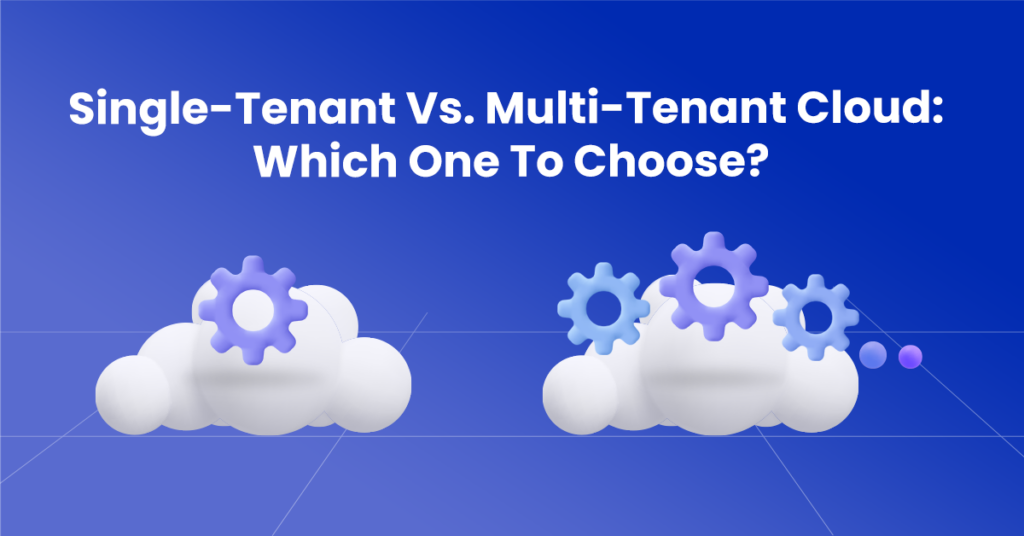
-
- Cost Structure: Single-Tenant Cloud Computing can require a lot more expense upfront as it requires dedicated hardware and software resources for each customer. It’s generally only practical for a big company like Meta or Netflix to run their own hardware. For most companies, Multi-Tenant Cloud Computing is cheaper as it uses shared resources for multiple customers and customers can benefit from economies of scale.
-
- Security: Single-tenant offers stronger isolation, making it a better choice for sensitive data and strict compliance needs. Multi-tenant security depends on robust tenant separation and can pose risks if not well managed.
-
- Performance Efficiency: Single-Tenant Cloud Computing offers better performance because of dedicated utilization, while Multi-Tenant Cloud Computing may offer less performance as resources are shared among multiple customers and resource contention may occur.
-
- Flexibility: Single-Tenant Cloud Computing is more flexible as it allows customers to customize their environment, while Multi-Tenant Cloud Computing is less customizable, with standardized features applied across all users.
-
- Scalability: Scaling a single-tenant solution often requires duplicating infrastructure per client, which is slower and more manual. Multi-tenant systems scale more efficiently by leveraging shared resources and centralized operations. This makes it easier to accommodate rapid growth or spikes in usage without the need for significant infrastructure changes for each customer.
-
- Maintenance: Maintenance in single-tenant systems is handled per customer, allowing for custom schedules and slower rollout of updates. In multi-tenant environments, updates and maintenance are centralized, making it easier to manage but less tailored.
Factors to Consider While Choosing Between Single-Tenant vs. Multi-Tenant Cloud Architecture
When it comes to choosing between single-tenant and multi-tenant cloud solutions, there are several factors to consider.
- If security is your top concern—common in industries like healthcare, finance, or government—single-tenant is typically the better fit. It provides full resource isolation, which helps with compliance frameworks like HIPAA, PCI-DSS, or FedRAMP.
- Cost-conscious SaaS startups or SMBs often choose multi-tenant to reduce infrastructure spend and simplify operations. By sharing compute, storage, and maintenance overhead, they can scale their customer base without scaling their costs.
- For businesses expecting rapid growth—like consumer apps, marketplaces, or platforms with unpredictable usage patterns—multi-tenant models offer the agility to scale users and workloads quickly. In contrast, single-tenant setups may struggle to scale without significant manual provisioning.
Ultimately, the decision depends on the specific needs of the business.
Cost per Customer Between Single-Tenant and Multi-Tenant Cloud Architecture
Choosing between single-tenant and multi-tenant cloud models isn’t just a technical decision — it’s a business one. With nOps Business Contexts+, you can align cloud spend with the metrics that matter most to your organization.
- Track cloud costs by product, team, or customer using advanced cost allocation and showback tools.
- Identify high-cost, low-efficiency workloads and decide which apps need isolation — and which can be consolidated.
- Compare unit economics across features or business units to understand true cloud COGS.
- Visualize cost trends over time to see how architecture choices impact your bottom line.
nOps is rated 5 stars by G2 and manages $2 billion in cloud spending — connect your AWS account to try it out for free.
Frequently Asked Questions
What is the difference between single tenant and multi-tenant in Azure?
In Azure, single-tenant means a service instance (like Azure AD or an app registration) is dedicated to one customer. Multi-tenant means the service is shared across multiple customers (tenants), with data isolation managed at the software level. For example, an Azure AD app can be single-tenant (accessible only within your org) or multi-tenant (accessible to users in any Azure AD tenant). Single-tenant provides more control and isolation; multi-tenant enables broader access and easier SaaS deployment but shares infrastructure.
What is a single tenant in cloud computing?
A single-tenant cloud architecture means each customer gets their own dedicated environment—separate infrastructure, databases, and application instances. This setup offers stronger isolation, easier compliance, and more customization but typically costs more to maintain. It’s common in regulated industries like healthcare or finance, where security and tenant-specific configurations are critical. Single tenancy contrasts with multi-tenant models, where multiple customers share the same resources but are logically separated.
What does multi-tenant mean in cloud?
Multi-tenant cloud means a single instance of software or infrastructure serves multiple customers, with logical isolation of data and configurations. All tenants share the same codebase and compute resources, which improves scalability, simplifies updates, and lowers cost. It’s the default architecture for most SaaS products—think GitHub, Salesforce, or Microsoft 365. While efficient, it can pose challenges for noisy neighbor issues, tenant-specific SLAs, or custom security policies unless engineered for strong isolation.
What is an example of a single tenant software?
A good example is an enterprise-dedicated instance of Atlassian Jira deployed in a private cloud or VPC. In this setup, the company has a fully isolated stack—separate database, app server, and configuration—used only by that organization. This contrasts with Jira Cloud, which is multi-tenant. Another example is a self-hosted GitLab instance where the software is installed on your own infrastructure and not shared with other users.



